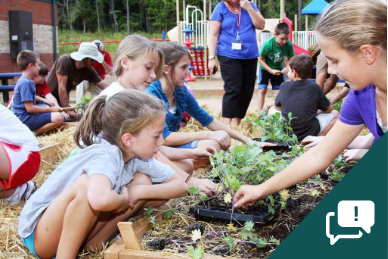CSU Extension
A Unit of the Office of Engagement and Extension

Empowering Coloradans
CSU Extension empowers Coloradans to address important and emerging community needs using dynamic, science-based educational resources.
For over 100 years, CSU Extension has helped people in Colorado find the answers they need for a healthy home life, successful business and thriving community. We bring the University’s research-based resources to local communities across the state.
Whether you have a question about health, financial literacy, pasture or livestock management, weeds, pests or gardens, 4-H or youth development, renewable energy, elder or child-care issues, CSU Extension can connect you to the latest, most accurate data and information.
A History of CSU Extension
1862: Morrill Act
- President Lincoln signed the Morrill Act of 1862 which granted land for the establishment of agricultural colleges throughout the country. The federal bill donated public lands to several states, the sale of which was intended to provide funds to establish and support institutions that would provide more broadly accessible and practical education.
1870s - 1880s: Rural Education, Agriculture Experiment Stations
1870
- Colorado Agricultural College, later to become Colorado State University, was established by Governor Edward McCook.
1879
- The first off-campus Farmer’s Institute was held in Greeley, Colorado. The Farmer’s Institutes were scheduled instructional events for local agriculturalists directed by academics. These institutes served as forerunners to agricultural extension.
1887
- Agriculture experiment stations were established with the Hatch Act of 1887. The experiment stations served as the foundation of what would later become CSU Extension.
1910s: World War I
- During WW1 CSU Extension, along with its national counterparts, worked to boost local agricultural output by working with farmers to reduce inefficiencies and waste, resulting in dramatic increases in crop and livestock yields.
- The Extension Youth Development program, later to become Colorado 4-H, begins.
1914: Extension Service Officially Established
- The Smith-Lever Act of 1914 officially established CSU Extension as part of the Cooperative Extension Service. The outreach arm of land-grant universities, Extension aimed to inform people about current developments in agriculture, home economics, public policy/government, leadership, 4-H, economic development, and more.
- Logan County was home to the first Extension office in Colorado, pre-dating the Smith-Lever Act of 1914.
1930s: Great Depression and the Dust Bowl
- CSU Extension disseminated information about and coordinated the implementation of federal relief programs to fight hunger in Eastern Colorado communities and help sustain croplands threatened by drought.
- Extension worked with Coloradans to create a variety of cooperatives including rural electric and grain coops. Many of these are still in existence today.
1940s: World War II
- During WWII, Extension again provided expertise in agriculture to help boost food production and education around safe food preservation. In addition, Extension offices worked with the federal government to determine which men should serve on farms and which on the battlefield.
1970s - 1990s: Growth and Change
1970s
- Colorado Master Gardener Program begins.
- First female county directors assume their roles in Extension
1980s
- Farm and energy crisis leads to a priority focus on agriculture programs at CSU.
1990s
- Extension started shifting from fact bulletins to internet-based resource sharing and education.
- Drought Task Force established.
2000s - 2010s: Expanding Services
- By the early 2000s, CSU Extension operated out of 54 offices across the state.
- Extension agents began work in climate-smart agriculture and energy conservation.
- Extension embraces urban agriculture, specifically food policy and process.
Present: Empowering Coloradans to Thrive
- Today, CSU Extension empowers Coloradans to address important and emerging community needs using dynamic, science-based educational resources. Current program areas include: Community & Economic Development, Household/Family/Finances, Food & Ag, Health & Well-Being, Natural Resources & Environment, Personal Property/Yard/Land Management, and Youth Development.
- With offices in 63 Colorado counties, Extension is local wherever you are.
- Learn more: extension.colostate.edu

